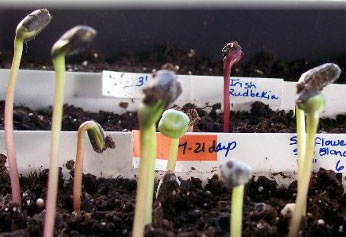
An experimental investigation is an organized series of procedures used to test an idea. In a good experimental investigation, you must eliminate error to ensure that the results are due to the factor or factors being tested. In order to do this, you must include and be able to identify the following:
Let's look at an experiment and try to identify the parts of the experiment from above. Read the following scenario.
Juan wanted to find out whether the concentration of salt in water affected how long it takes water to cool. He put 4 identical plastic glasses, each of which contained 225 mL of a different concentration of salt solution, into a freezer. The different salt concentrations were 0 percent, 10 percent, 20 percent, and 30 percent. He recorded the amount of time it took for each solution to cool to a temperature of 3 degrees Celsius.
What is the independent variable? Hint - What is Juan changing on purpose?
Interactive popup. Assistance may be required. Salt Concentrations - 0 percent, 10 percent, 20 percent, and 30 percent
What is the dependent variable? Hint - What are the results that Juan was looking for?
Interactive popup. Assistance may be required. The amount of time it took each solution to cool to a temperature of 3° Celsius
What are the constants? Hint - What are all the factors that are the same (not allowed to change) throughout the entire experiment? There are several.
Interactive popup. Assistance may be required. 4 identical plastic glasses, 225 mL of salt solution, same freezer so temperature is the same
Which glass is the control group? Hint - Which is the standard of comparison for checking or verifying the results of an experiment?
Interactive popup. Assistance may be required. The glass with the 0 percent solution would be the control group.
Which glass is/are the experimental groups? Hint - Which glasses is the independent variable being applied to?
Interactive popup. Assistance may be required. The glasses with 10 percent, 20 percent, and 30 percent solution would be the experimental groups.

Now you try! Use your notes and identify the independent variable, dependent variable, constants, control group, and experimental groups for the following experiment.

Source: Daily Encouragement, WordPress
Susan wanted to know how the amount of water affected the rate of seed germination. She read that 150 mL of water was the ideal amount of water for seed germination of up to 10 seeds in 500g of soil. She got 5 identical flower pots and placed 500g of potting soil in each. She then planted 10 seeds of the same type in each pot. She placed the pots in the same location so that each received the same amount of light. The pots were given the following amounts of distilled water each day for 40 days:
Pot 1 50 mL
Pot 2 100 mL
Pot 3 150 mL
Pot 4 200 mL
Pot 5 250 mL
Each day she recorded the number of seeds that germinated and the height of each plant.
